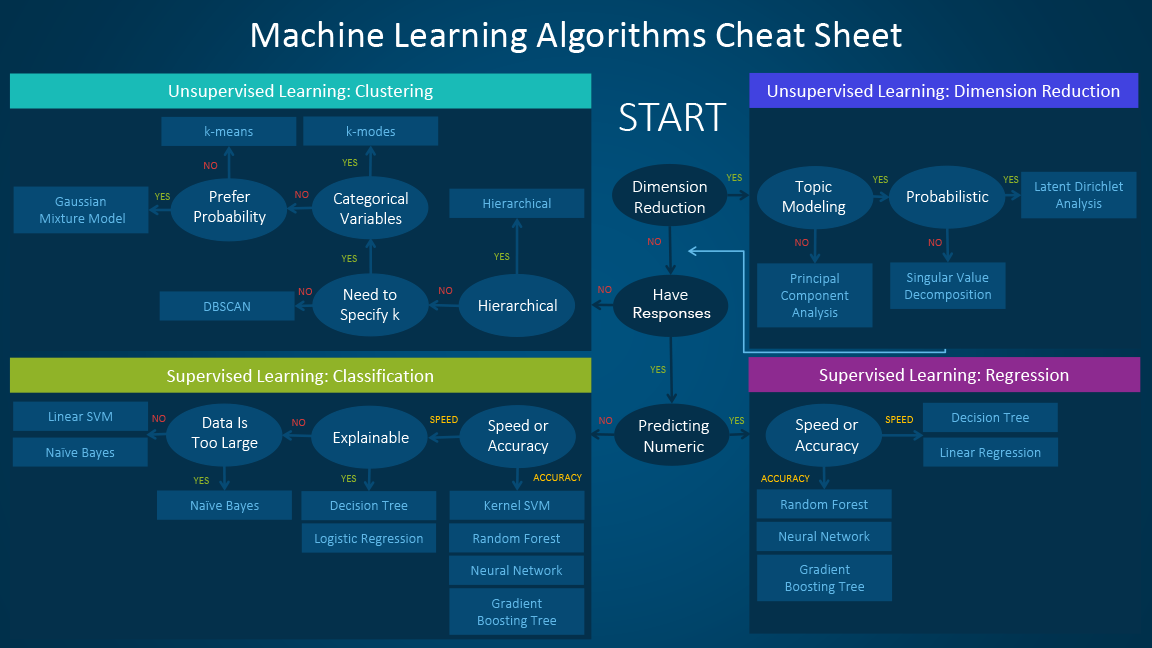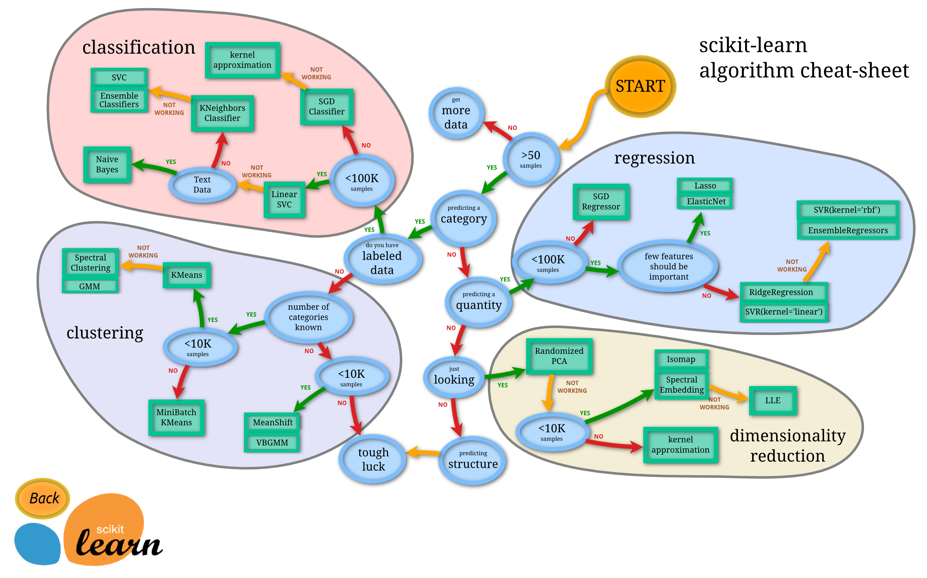Machine Learning algorithms blogs surveyed
Motivation &
Introduction:
Machine
learning aim to develop computer programs that can access data and learn
themselves. This automation without human interaction or intervention if
mimicked similar to the structures of
brain then such programs or applications becomes an Artificial Intelligent
systems. If they are as such used for constructive purpose to support
technological advancements it is best way forward for human’s survival of fittest
[1].
Methodology:
Questions
like “Which algorithm to be used?”, “What are the types & techniques in
Machine Learning algorithms?” forms the main hypothesis to be answered to
through this survey[2].
Literature:
The main ideas to think for a problem solver with machine learning algorithms were: What is the Business problem, Is my Objective requirements Operational/Strategic, How will a model be implemented & Algorithms capability that matches with requirements. The 3 ways of possibility to define the requirements are: Traditional statistical techniques on fundamentals, self-learning is ML & Neural networks are deep learning.
Survey on Real-world application and Research Directions from cybersecurity, smart cities, healthcare, e-commerce, agriculture etc.,[3] is the actual motivation for anyone to start with selection and dissemination of such knowledge structures in the machine learning arena. This should start from fundamentally dealing with the hypothesis discussed here. How to Select the Right Machine Learning Algorithm [4] describes the 7 key factors to consider when you have to select the right machine learning algorithms. The basis again where to use which algorithm is dealt with in click [5].
Guide to choose the right machine learning algorithm [6]:
- Size of the training data
- Accuracy and/or interpretability of the output
- Speed or Training time
- Linearity
- No. of features
Figure
courtesy: Choose-ml-technique at serokell.io[7]
Essentials, Principles, Types & Examples [8]:
- Data Vs Algorithm – terms to understand
- Explainability vs Accuracy trade-offs
- Principle is Y=f(X) in supervised learning
- Types or Techniques:
o Supervised
o Un-Supervised
o Semi-Supervised
o Reinforcement
·
Examples: Based on Space, time and Output
· How to run ML Algorithms
Figure courtesy Hacker noon [9].
Commonly used ML
algorithms in 2021[10]:
· Supervised
o Linear
regression
o Logistic
regression (a subset of Neural network)
o Decision
tree, CART
o SVM
algorithm
o Naive
Bayes algorithm
o KNN algorithm
· Unsupervised:
o K-means
o Random
forest algorithm
o Dimensionality reduction algorithms, PCA
o Association, Apriori, ANN [11]
· Ensembling:
o Ensembling
(Bagging, Bootstrap sampling) [12]
o Gradient
boosting algorithm and AdaBoosting algorithm
· Reinforcement, Q-learning, Model-based value estimations,
o GAN,
Self-trained Naive Bayes [13]
Figure courtesy: Hui Li, ML Cheat Sheet [15]
· Further tour:
Figure Courtesy Scikit-learn[18] Hacker noon
Case : for Azure ML[20]
1.
Business
scenarios and the Machine Learning Algorithm Cheat Sheet
2. Comparison of
machine learning algorithms
3. Requirements for
a data science scenario
4. Accuracy
6. Linearity
Case for Smarter cities:
The
Digital Twin Paradigm for Smarter Systems and Environments: The Industry use
cases , many of the above and Canonical correlation Analysis for feature
extraction type of task [20].
Case with Experiment implementation:
Commonly used Machine
Learning Algorithms (with Python and R Codes) [22].
Conclusion:
References:
[1] https://www.expert.ai/blog/machine-learning-definition/
[2] https://www.analytixlabs.co.in/blog/how-to-choose-the-best-algorithm-for-your-applied-ai-ml-solution/
[3] Sarker, I.H.
Machine Learning: Algorithms, Real-World Applications and Research
Directions. SN COMPUT. SCI. 2, 160 (2021).
https://doi.org/10.1007/s42979-021-00592-x
[4] https://towardsdatascience.com/how-to-select-the-right-machine-learning-algorithm-b907a3460e6f
[5] https://www.datacamp.com/community/news/which-machine-learning-algorithm-should-i-use-raluply88ph
[6] https://www.kdnuggets.com/2020/05/guide-choose-right-machine-learning-algorithm.html
[7] https://serokell.io/blog/how-to-choose-ml-technique
[8] https://www.knowledgehut.com/blog/data-science/machine-learning-algorithms
[9] https://hackernoon.com/choosing-the-right-machine-learning-algorithm-68126944ce1f
[10] https://www.simplilearn.com/10-algorithms-machine-learning-engineers-need-to-know-article
[11]
https://www.dezyre.com/article/common-machine-learning-algorithms-for-beginners/202/
[12] https://www.dataquest.io/blog/top-10-machine-learning-algorithms-for-beginners/
[13] https://searchenterpriseai.techtarget.com/feature/5-types-of-machine-learning-algorithms-you-should-know
[14] https://machinelearningmastery.com/a-tour-of-machine-learning-algorithms/
[15] https://blogs.sas.com/content/subconsciousmusings/2020/12/09/machine-learning-algorithm-use
[16]https://analyticsindiamag.com/how-to-choose-the-best-machine-learning-algorithm-for-a-particular-problem
[17] https://www.goodworklabs.com/machine-learning-algorithm
[18] https://hackernoon.com/hn-images/1*9gGtNn2EXW1Zog-bjdGsHQ.png
[19] https://docs.microsoft.com/en-us/azure/machine-learning/how-to-select-algorithms
[20] https://www.sciencedirect.com/topics/engineering/machine-learning-algorithm
[21] https://www.youtube.com/watch?v=gZWhVj-g8Mc
[22] https://www.analyticsvidhya.com/blog/2017/09/common-machine-learning-algorithms
.jpg)





0 Comments:
Post a Comment
Subscribe to Post Comments [Atom]
<< Home